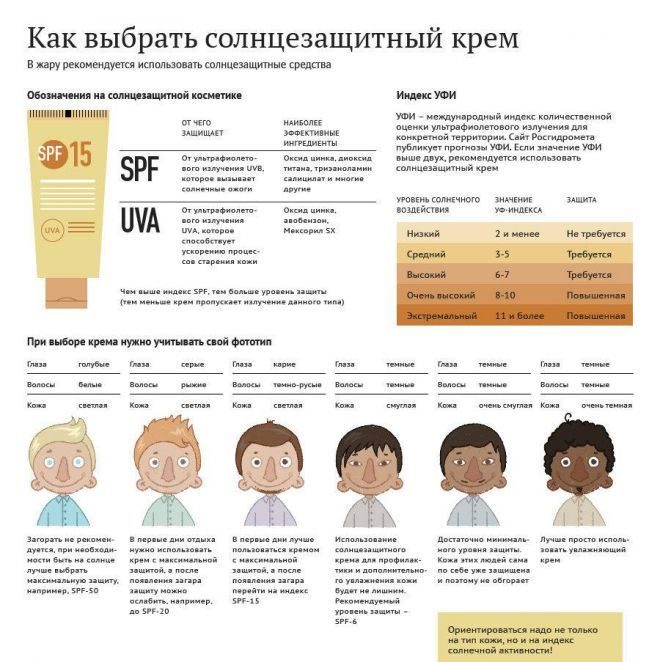Content
- 1 Health Benefits of the Sun
- 2 The benefits and harms of sun tanning
- 3 How to sunbathe
- 4 Is it possible for pregnant and lactating women to sunbathe in the sun
- 5 Sun for children
- 6 How to protect skin and hair from the sun
- 7 How to choose sunscreen
- 8 The benefits and harms of sunscreens
- 9 Sun damage to humans
- 10 Who is contraindicated to sunbathe in the sun
The question of how the sun is useful and how it affects the human body was asked back in antiquity. The ancient sages already understood then that fresh air and sunbathing help to quickly heal wounds and relieve many external and internal health problems.

Today, the influence of UV rays is well studied, which means that you can really get the most out of sunbathing.
Health Benefits of the Sun
Solar radiation that reaches the earth's surface is divided into ultraviolet A and B. Ultraviolet C is the most dangerous, it is retained by the ozone layer of the atmosphere. UVA and UVB stimulate the production of specific substances in human skin. This is the reason for the positive influence of the sun.
Benefits of contact of UV rays with human skin:
- stimulation of the production of vitamin D, which is involved in calcium metabolism, protects against malignant neoplasms and strengthens the immune system;
- with moderate exposure to the sun, lowering blood pressure, normalizing heart rate;
- increasing the functioning of the immune system due to the production of antibodies;
- healing wounds on the skin, improving the condition of dermatitis, psoriasis, acne and acne;
- increase in metabolic processes and activation of cellular respiration.
The sun directly affects a person's mood and general emotional state. With the first rays of spring, a person disappears apathy, depressive states, tearfulness and insomnia disappear. This is the merit of the hormone serotonin, which is actively produced under the influence of UV rays. In addition to serotonin, the sun improves the synthesis of sex hormones in women and men, therefore, in the spring-summer period, sexual desire is increased, and dyshormonal states are temporarily stabilized.
Sunburn is another conditional benefit of the sun, which lies in beautiful skin color. In fact, this is the protection of the body from ultraviolet radiation, but in the light of fashion trends it acts as a positive moment.
The benefits and harms of sun tanning
Under the influence of ultraviolet radiation in the upper layer of the skin - the epidermis, the substance melanin is formed. It is synthesized by special cells - melanocytes. The sun's rays only need to touch the skin of a person for 5 minutes to start the production of melanin and vitamin D. The intensity of their formation depends on the type of skin and the time spent outdoors. If you regularly sunbathe, the tan lasts the entire warm season. In winter, melanin is partially destroyed and removed from the cells. Vitamin D is also gone.
Tanning is good for the skin with antimicrobial and antimycotic effects. This means that if there are parasitic bacteria or fungi on the skin, their number will be reduced or the population will be completely destroyed. It is especially valuable for a person with acne, microinflammation, acne. Tanning is useful for visual improvement of complexion and body. The skin becomes even, acquires a golden color, even the old marks of acne and blackheads go away.
But besides the benefits, there is also harm:
- the rate of photoaging of the skin increases (dryness of the epidermis, deepening of wrinkles, including mimic ones);
- the risk of developing skin cancer and its most complex form, melanoma, increases;
- the likelihood of allergies with prolonged exposure to the sun;
- worsening of the course of certain chronic skin diseases;
- the appearance of age spots, white spots.
Sunburn is especially harmful for people with fair skin and hair, children and nursing mothers. They have an increased sensitivity to ultraviolet light, and the protective processes, that is, the production of melanin, are not intense. Therefore, exposure to UV rays for more than 20-30 minutes leads to burns.
How to sunbathe
Due to the incidence of cancerous skin lesions, doctors have created a list of recommendations for sunbathing. Their main rule is moderation and protection. How long to swim in UV rays, at what time and what protective equipment to use depends on the type of skin and the region. The closer the region is to the equator, the more intense the sun's radiation and the higher the risk of burns.
What is the best time to sunbathe
Ultraviolet radiation peaks between 12 noon and 4 pm. The rest of the day is conditionally safe. This does not mean that you can go out and sunbathe only in the morning and in the evening. On vacation at sea, such a regime is difficult to follow. Therefore, it is permissible to actively sunbathe from 8.00 to 11.00 or from 17.00 to 20.00. The rest of the time you can sit under an umbrella, on a closed terrace, under a canopy, so that direct sunlight does not touch your skin.
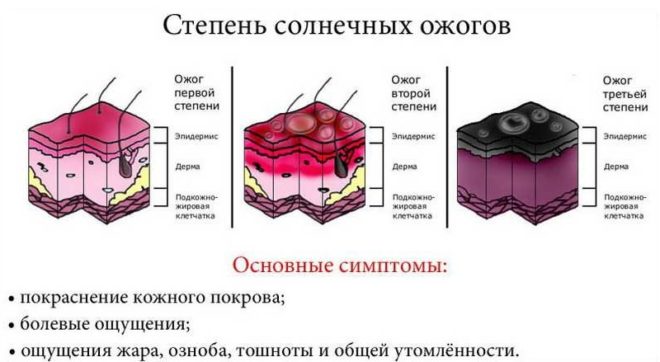
The first days by the sea, they choose places farther from the water's edge, since the sea surface is reflective, which means that the risk of burns increases significantly. Also, you can not sunbathe immediately after leaving the water, you must definitely dry your body with a towel.
How much can you sunbathe in the sun
The lighter the skin, the shorter the sun exposure. Actively sunbathing begins with a 15-minute sunbath at the allowed time. In this case, a protective cream is applied to the skin 30 minutes before going outside. If the skin is white and thin, on the first day they tan for 5-10 minutes in the morning and in the evening.
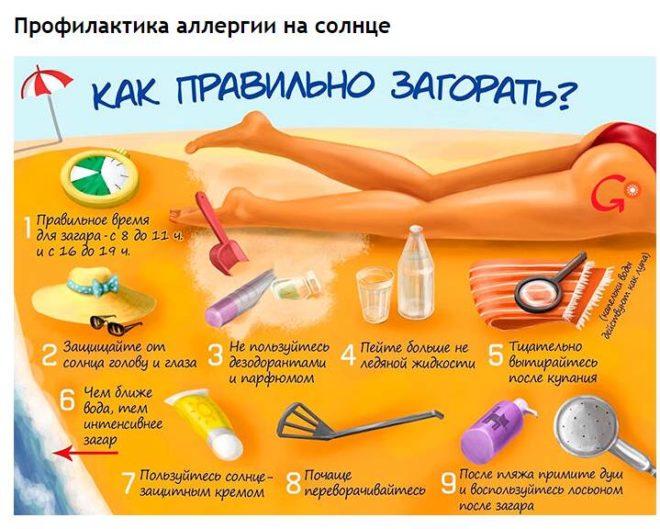
For 1 week, sunbathing time is brought to 30-40 minutes, for people with active production of melanin, this time is increased to 1 hour. If you use a protective cream with a protection level of more than 30, even 2 hours in the sun will not harm your health, but only with preliminary skin preparation.
Is it possible for pregnant and lactating women to sunbathe in the sun
Ultraviolet light penetrates into the skin only 15 mm. That is, other tissues and organs do not feel its direct impact. This means that sun tanning is absolutely safe for the fetus, but not always for a pregnant woman. The point is the increased sensitivity of the body of a pregnant woman to any external influences, including sunlight. In combination with a special hormonal status, a woman has an increased risk of age spots on her face and body.
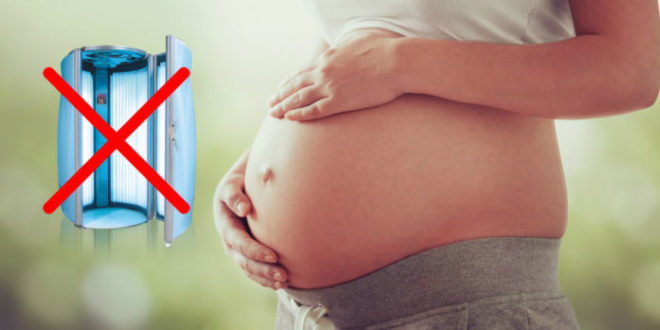
Other negative factors of sunburn:
- increased blood pressure;
- increased blood flow;
- allergy.
Not everyone has such a reaction, but in order not to get into a risk group, it is better to limit the time of sunbathing to the recommended ones.
Sun for children
Ultraviolet light for children is a good doctor. The little one can be healed with simple sunbathing combined with clean sea air. This will increase its defenses for many months, strengthen bones and improve the condition with atopic dermatitis. A child's body reacts brighter to ultraviolet light than an adult. All metabolic processes are accelerated, vitamin D is actively produced and calcium is absorbed, blood pressure rises and blood vessels dilate.
Some rules for staying in the sun with children:
- children under 2 years old can only be in direct rays for 10 minutes a day;
- for children from 3 years of age, the stay is increased to 30 minutes, but with their head and shoulders covered;
- a ban on walking at temperatures above 25 ° C;
- to avoid rapid loss of moisture, the drinking regime is observed. They drink often, but little by little.
The sun's rays are beneficial for children only in moderation. Any burn is fraught with an increase in pigmentation in the future and the development of UV allergy. If the family goes on vacation at sea, in 2 weeks they begin to prepare the child for an active stay in the sun. To do this, they walk every day 2 times in the morning and in the evening, in hot and sunny weather they lubricate the body with a special cream. They teach the child to wear a headdress, preferably a panama hat with brims, which will protect the face, neck and hair.
How to protect skin and hair from the sun
With prolonged exposure to UV light, protection and hydration are important. If the body is often covered by clothing, then the face, hands and hair are almost always open. These areas need to be looked after more carefully. Headwear is the first and most effective means of protection. This is a cap or hat with brim, or a panama hat, predominantly white. In this case, the hair and skin of the face are well protected.
If the headgear is inappropriate, you must:
- in the morning, lubricate the skin of the face and neck with a moisturizing cream, and 20-30 minutes before going outside, apply a sunscreen spray or cream with SPF 15 or higher;
- gather hair in a light hairstyle. Tight and complex hairstyles with varnish and other styling products increase hair brittleness, and in summer they lose a lot of moisture and often fall out;
- in the evening after a shower, make moisturizing and caring masks for the face and hair from natural homemade ingredients 2-3 times a week.
During a seaside holiday, to protect your face from the sun, do not use alcohol-based lotions. They increase sensitivity to ultraviolet light and provoke skin pigmentation.
How to choose sunscreen
It all depends on the time spent in the sun, skin type and reaction to ultraviolet light. The darker the skin, the less protection in the form of a cream is needed. So blacks don't need it at all.
The essence of any protective equipment in the reflection of sunlight and the adsorption of ultraviolet radiation. The degree of protection shows how long a person can conditionally be in the sun without threatening the skin. To calculate this time you need:
- determine how many minutes of exposure to the sun the skin turns red without protection;
- multiply this time in minutes by the SPF number;
- so, if the skin is redder in 5 minutes, and a cream with a degree of 10 is selected, then you can stay in the sun for 50 minutes (5 × 10).
These are conditional calculations, since individual characteristics are not taken into account. And these include age and skin condition. So, up to 35 years old, the skin can independently cope with moderate UV radiation, and if the UV index does not exceed 3, then on this day the cream can not be used at all. The value of the UV index can be viewed in the weather forecasts for your region. To protect the child from the sun, use a cream with an SPF of 30-50.
The benefits and harms of sunscreens
Any sunscreen or spray works by the filters it contains. Their role is played by substances such as benzophenone or titanium dioxide, which, with frequent use, cause allergies or exacerbation of skin diseases. Therefore, it is important to choose the remedy that is optimal for all indicators, from the type and condition of the skin to the age and place of residence.
It is believed that spring tanning is the most aggressive, since the skin after winter is very sensitive to ultraviolet light, so the negative consequences of sunbathing in the form of burns or allergies are almost inevitable. In the spring, doctors recommend actively using creams with protection from 15 and higher, and in summer it switches to a lower degree from 2-4 SPF.
If we talk about the benefits, then it lies in the reflection of ultraviolet radiation and protection from its penetration into the deep layers of the skin. Burns or pigmentation with the correct selection of the cream are not dangerous.
Sun damage to humans
In general, the sun is beneficial for health and general well-being. But harmful effects also need to be considered. At risk are people with large moles on the body and hormonal imbalances. Under the influence of ultraviolet radiation, the processes of degeneration of cells from normal to malignant cells can arise in moles. This can be determined by their intensive growth, change in shape, unpleasant sensations in the problem area.
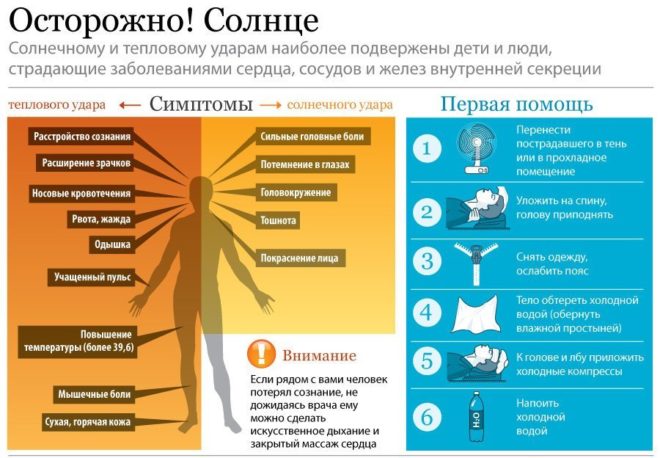
The sun damage to the skin of people with hormonal disorders is the appearance of large age spots. This indicates a violation of the process of melanin formation in the epidermis of different parts of the body. Usually pigmentation affects exposed areas of the body: face, shoulders, chest. Not everyone develops this reaction.
Photoaging is another harm caused by ultraviolet light. If the skin is not protected, ultraviolet light penetrates deep into the skin, causing water imbalance. This decreases the tone of the skin, it loses moisture, the processes of collagen synthesis are disrupted. From this, a network of wrinkles and a noticeable fading of the skin appear on the face and body.
Hypertensive patients and heart patients from prolonged exposure to the sun suffer from hypertensive crisis and tachycardia.
Who is contraindicated to sunbathe in the sun
The list of contraindications for sunbathing can be presented as follows:
- hypertension, poor circulation;
- diseases of the endocrine system, in particular, the thyroid gland;
- neurosis;
- varicose veins (legs and other areas are protected with clothing);
- children's age up to 2 years.
Photosensitivity, old age, obesity, skin diseases are a reason to limit the time spent in the sun. Protection from the sun of children should be especially careful, especially if the child has light skin and hair color.
The benefits of the sun for humans have been confirmed. No wonder that the best treatment for bad mood and well-being is a resort on the shore of the warm sea. The production of vitamin D and the happiness hormone serotonin are two components of effective recovery.


